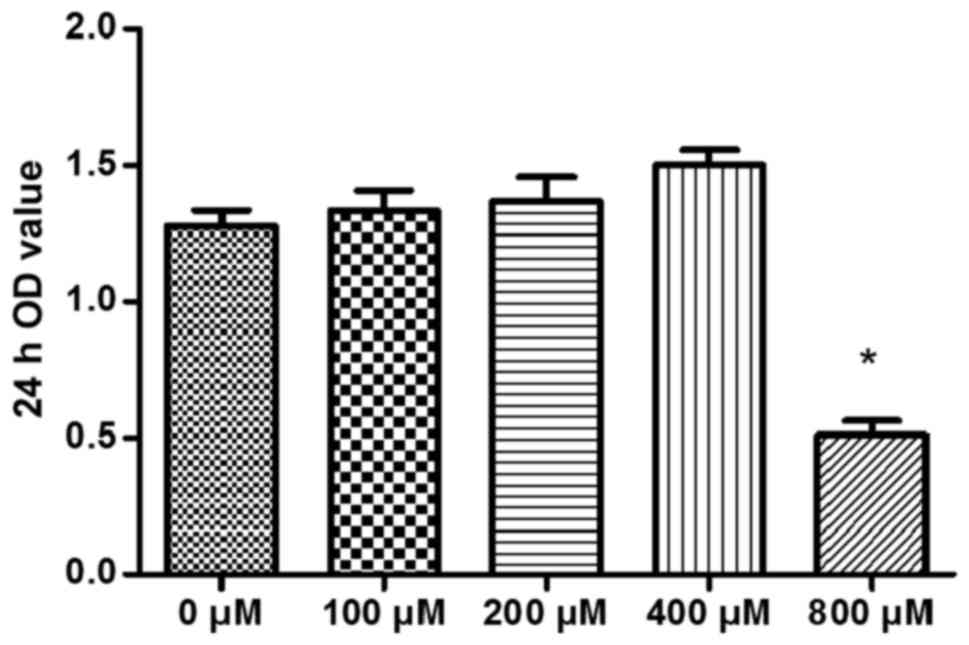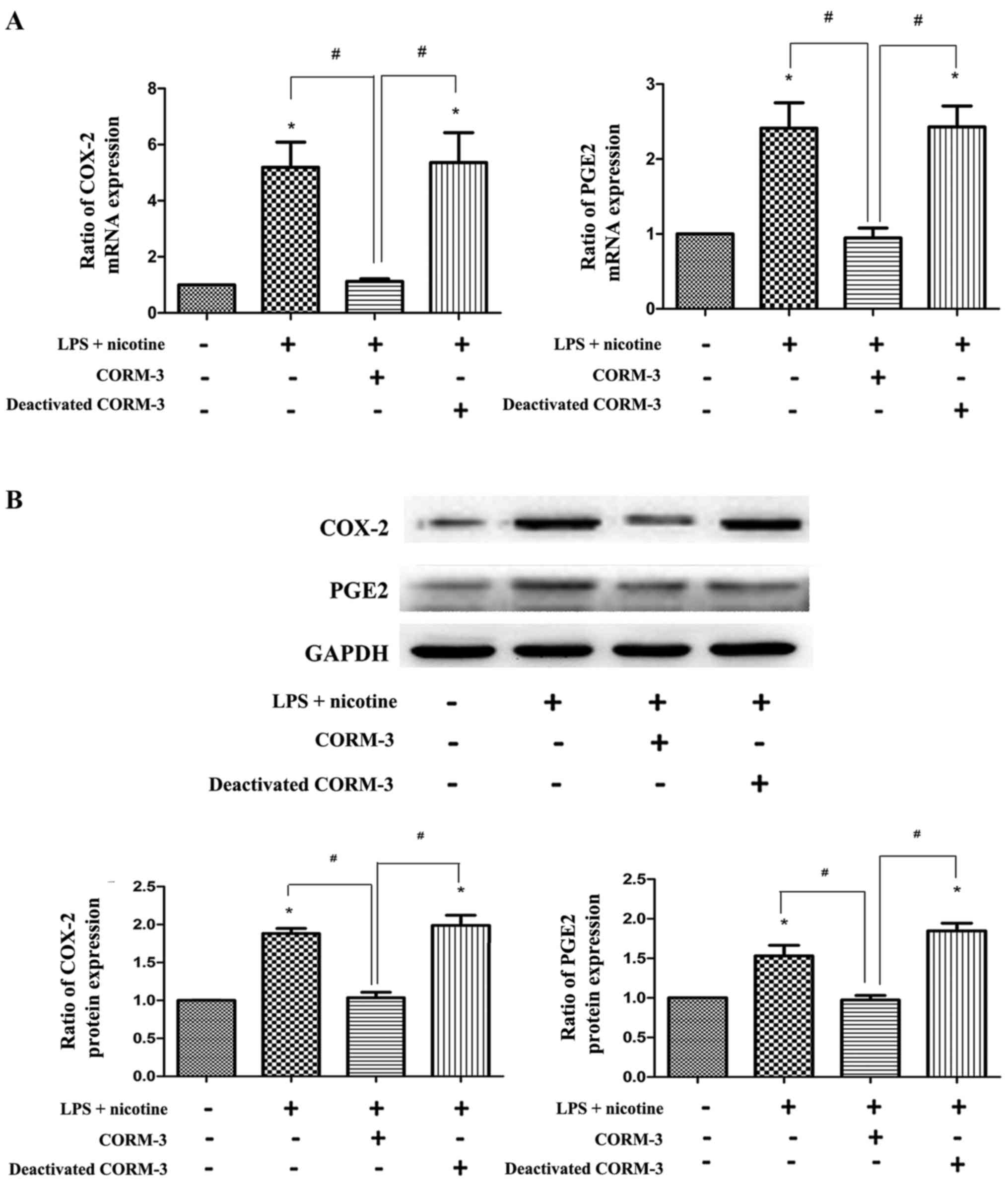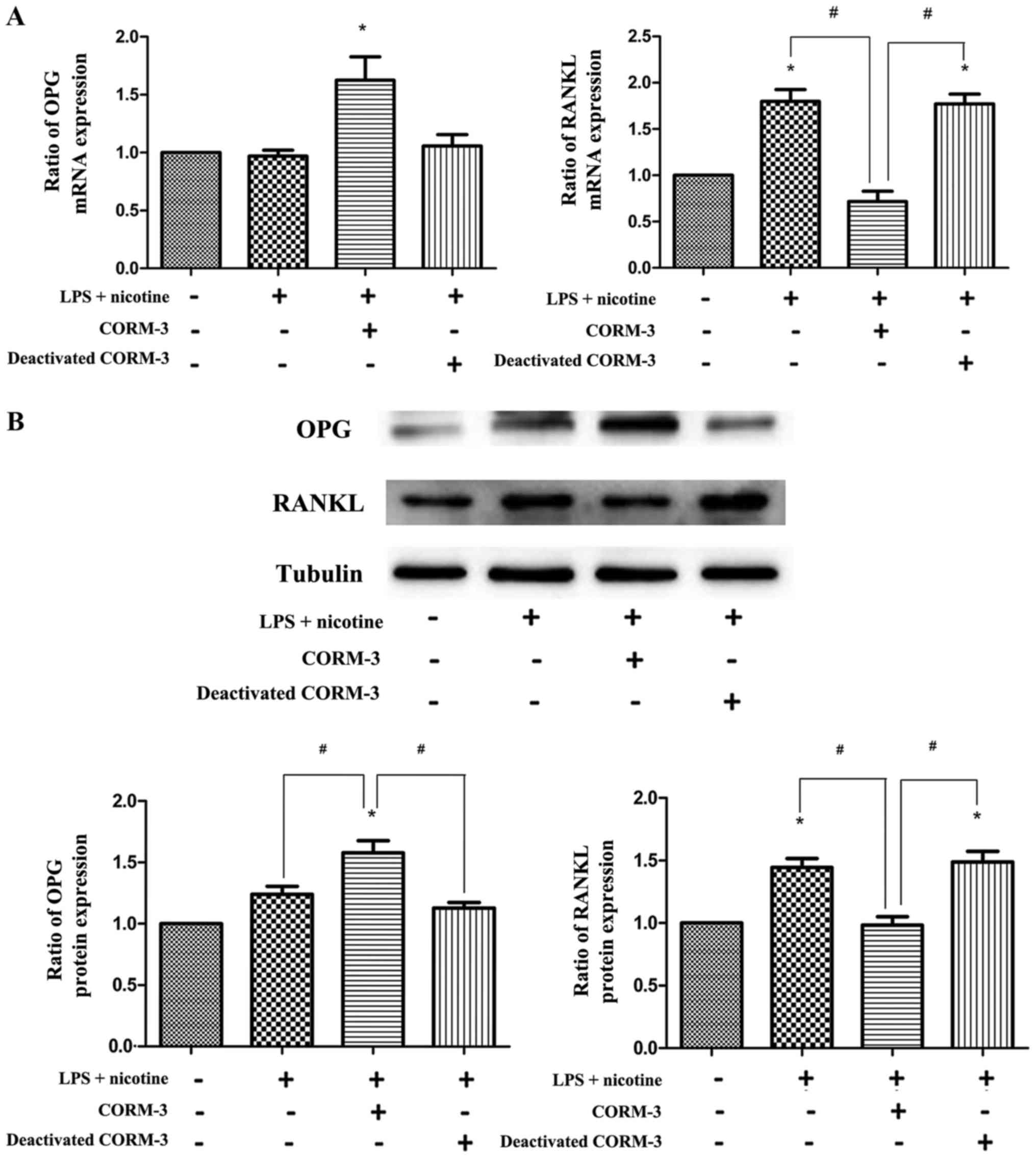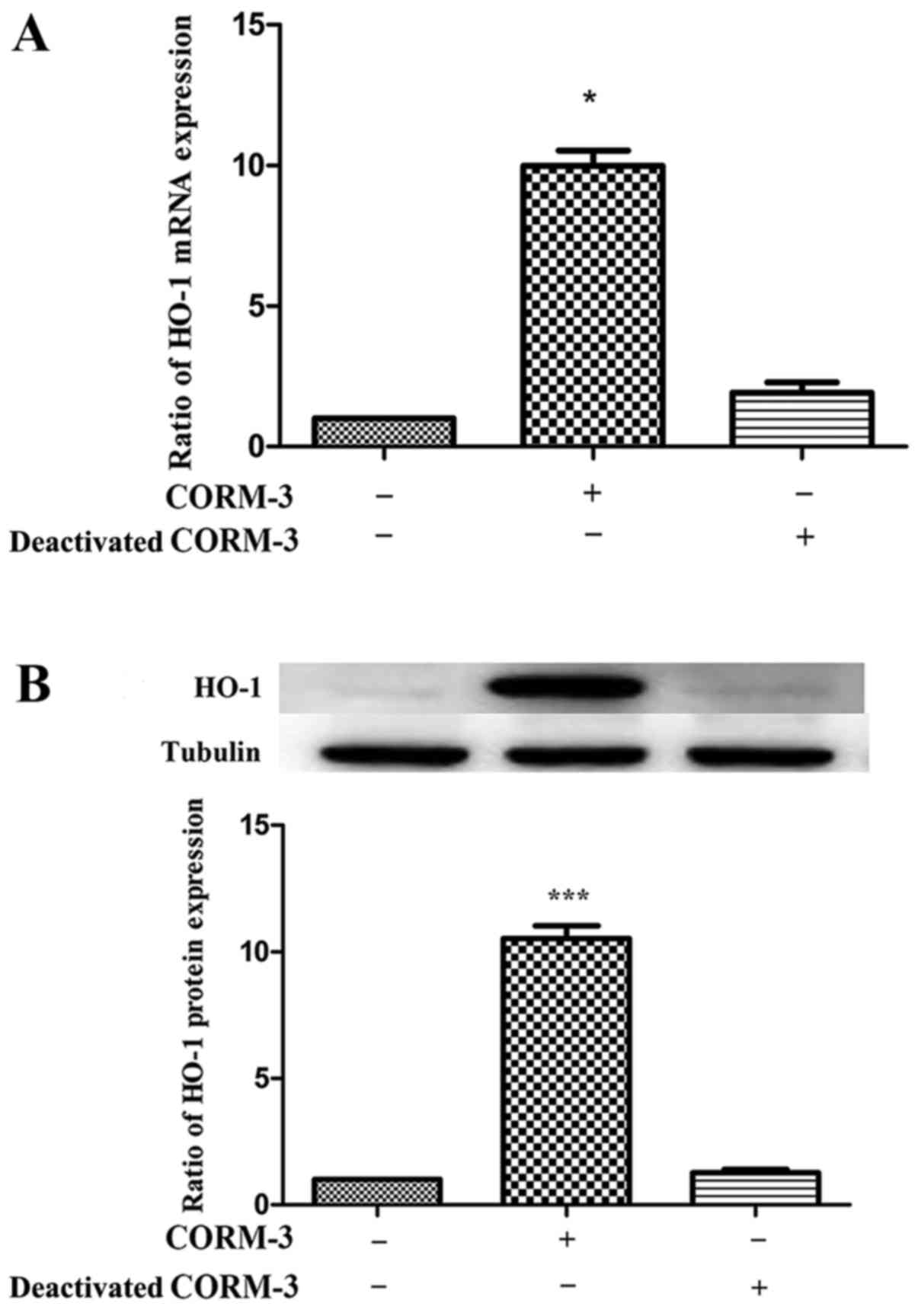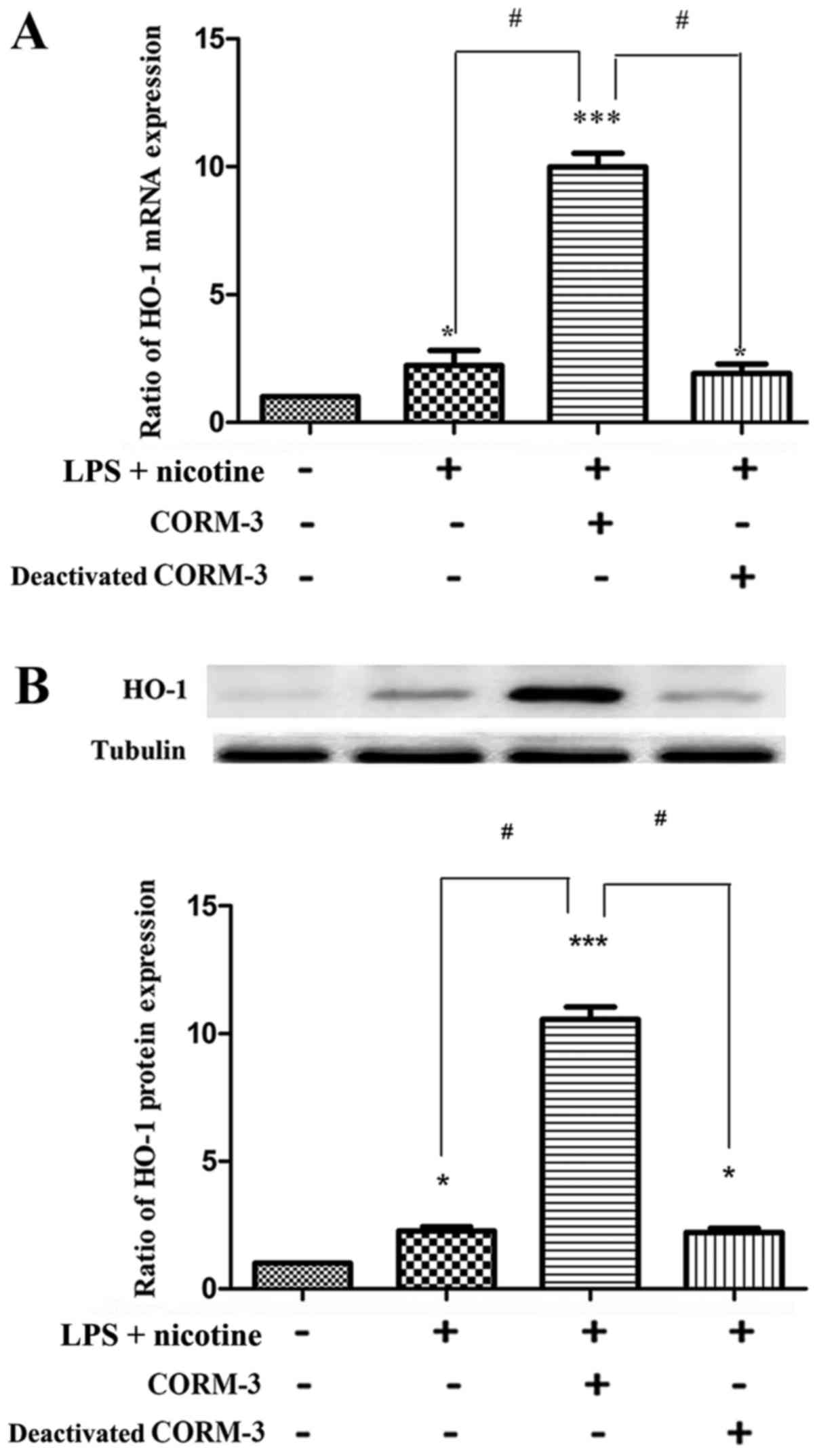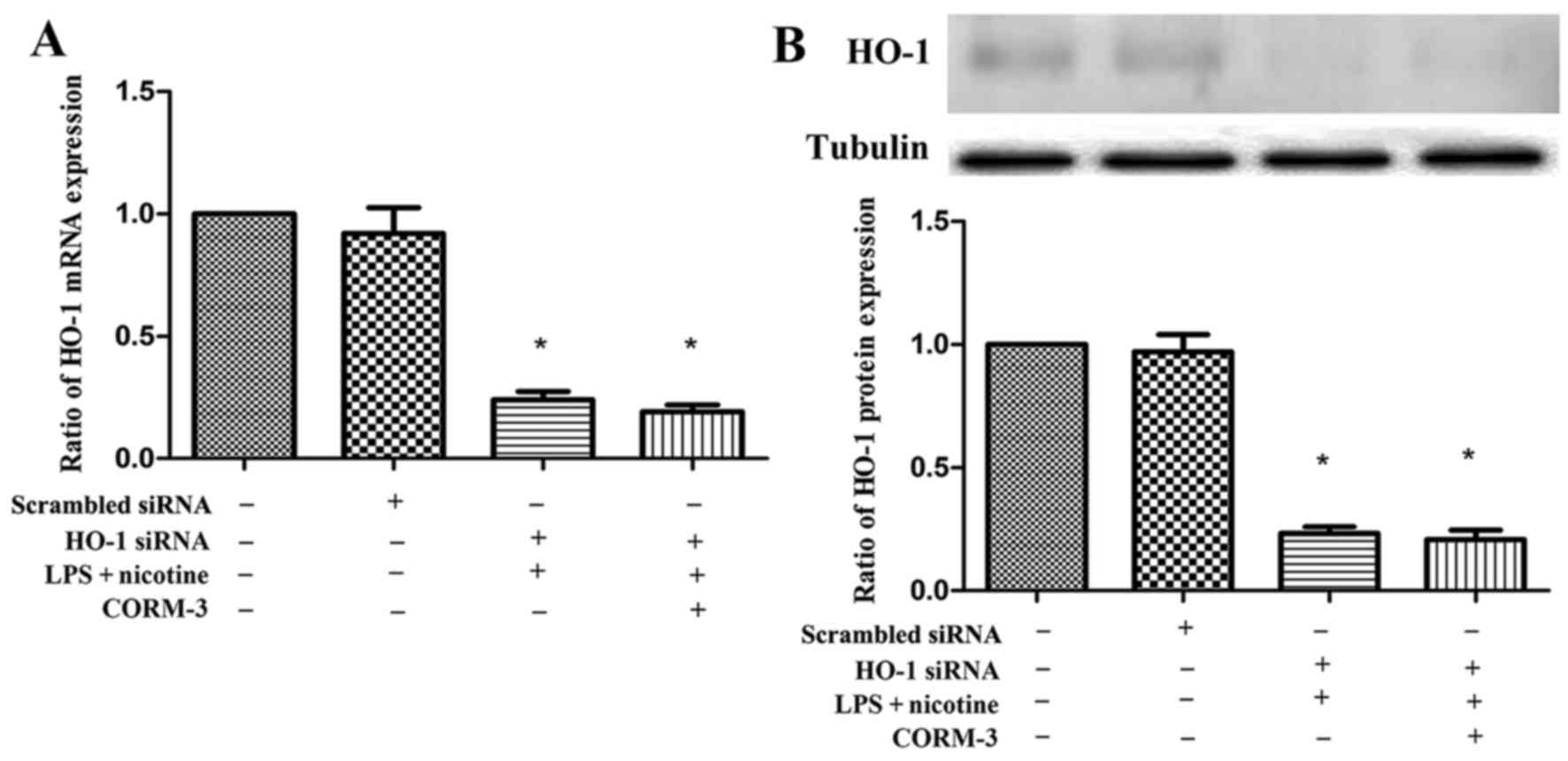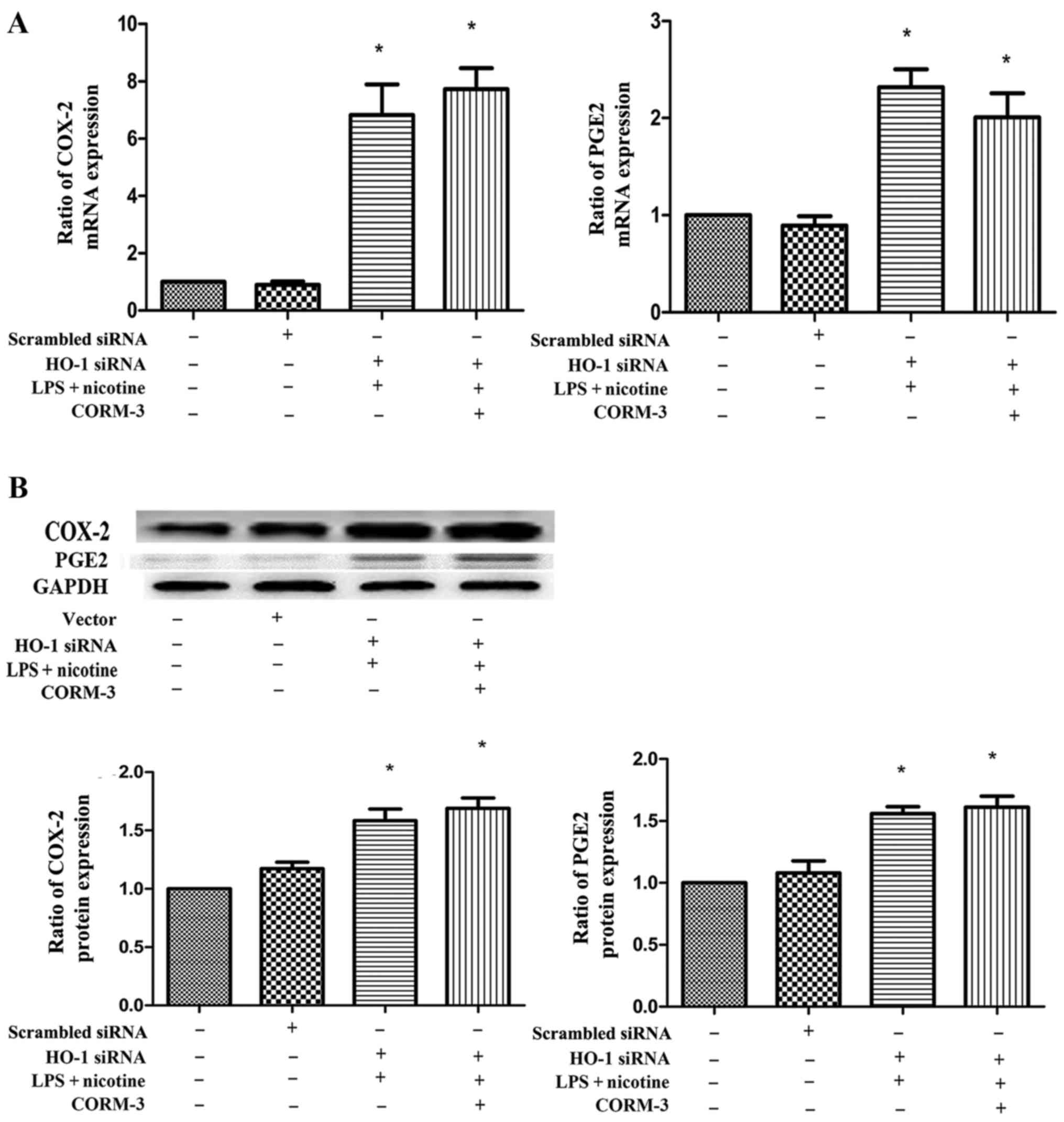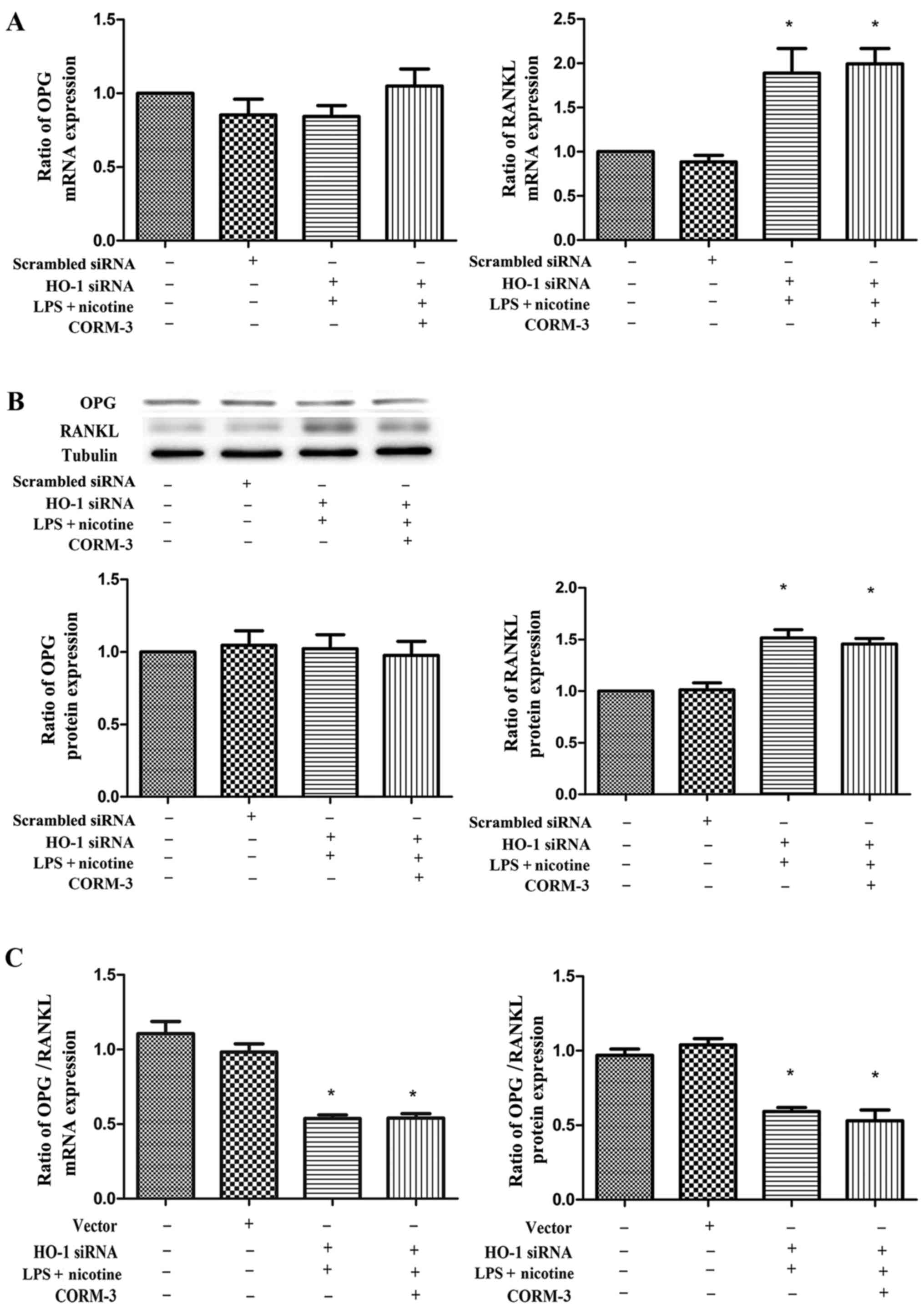|
1
|
Listgarten MA: Bacteria and periodontitis.
J Can Dent Assoc. 62:12–13. 1996.PubMed/NCBI
|
|
2
|
Sanz M and van Winkelhoff AJ; Working
Group 1 of Seventh European Workshop on Periodontology: Periodontal
infections: Understanding the complexity - consensus of the Seventh
European Workshop on Periodontology. J Clin Periodontol. 38(Suppl
11): 3–6. 2011. View Article : Google Scholar
|
|
3
|
Socransky SS and Haffajee AD: The
bacterial etiology of destructive periodontal disease: Current
concepts. J Periodontol. 63(Suppl 4): 322–331. 1992. View Article : Google Scholar : PubMed/NCBI
|
|
4
|
Yamaji Y, Kubota T, Sasaguri K, Sato S,
Suzuki Y, Kumada H and Umemoto T: Inflammatory cytokine gene
expression in human periodontal ligament fibroblasts stimulated
with bacterial lipopolysaccharides. Infect Immun. 63:3576–3581.
1995.PubMed/NCBI
|
|
5
|
Holt SC, Kesavalu L, Walker S and Genco
CA: Virulence factors of Porphyromonas gingivalis. Periodontol
2000. 20:168–238. 1999. View Article : Google Scholar : PubMed/NCBI
|
|
6
|
Slots J and Listgarten MA: Bacteroides
gingivalis, Bacteroides intermedius and Actinobacillus
actinomycetemcomitans in human periodontal diseases. J Clin
Periodontol. 15:85–93. 1988. View Article : Google Scholar : PubMed/NCBI
|
|
7
|
Graves DT and Cochran D: The contribution
of interleukin-1 and tumor necrosis factor to periodontal tissue
destruction. J Periodontol. 74:391–401. 2003. View Article : Google Scholar : PubMed/NCBI
|
|
8
|
Offenbacher S, Heasman PA and Collins JG:
Modulation of host PGE2 secretion as a determinant of
periodontal disease expression. J Periodontol. 64(Suppl 5):
432–444. 1993.PubMed/NCBI
|
|
9
|
Fukushima H, Jimi E, Okamoto F, Motokawa W
and Okabe K: IL-1-induced receptor activator of NF-kappa B ligand
in human periodontal ligament cells involves ERK-dependent
PGE2 production. Bone. 36:267–275. 2005. View Article : Google Scholar : PubMed/NCBI
|
|
10
|
Shimizu N, Ozawa Y, Yamaguchi M, Goseki T,
Ohzeki K and Abiko Y: Induction of COX-2 expression by mechanical
tension force in human periodontal ligament cells. J Periodontol.
69:670–677. 1998. View Article : Google Scholar : PubMed/NCBI
|
|
11
|
Offenbacher S, Odle BM, Gray RC and Van
Dyke TE: Crevicular fluid prostaglandin E levels as a measure of
the periodontal disease status of adult and juvenile periodontitis
patients. J Periodontal Res. 19:1–13. 1984. View Article : Google Scholar : PubMed/NCBI
|
|
12
|
Offenbacher S, Odle BM and Van Dyke TE:
The use of crevicular fluid prostaglandin E2 levels as a
predictor of periodontal attachment loss. J Periodontal Res.
21:101–112. 1986. View Article : Google Scholar : PubMed/NCBI
|
|
13
|
McGuire JR, McQuade MJ, Rossmann JA,
Garnick JJ, Sutherland DE, Scheidt MJ and Van Dyke TE: Cotinine in
saliva and gingival crevicular fluid of smokers with periodontal
disease. J Periodontol. 60:176–181. 1989. View Article : Google Scholar : PubMed/NCBI
|
|
14
|
Tanur E, McQuade MJ, McPherson JC,
Al-Hashimi IH and Rivera-Hidalgo F: Effects of nicotine on the
strength of attachment of gingival fibroblasts to glass and
non-diseased human root surfaces. J Periodontol. 71:717–722. 2000.
View Article : Google Scholar : PubMed/NCBI
|
|
15
|
Krishnan V and Davidovitch Z: Cellular,
molecular, and tissue-level reactions to orthodontic force. Am J
Orthod Dentofacial Orthop. 129:469.e1–469.e32. 2006. View Article : Google Scholar
|
|
16
|
Panahian N, Yoshiura M and Maines MD:
Overexpression of heme oxygenase-1 is neuroprotective in a model of
permanent middle cerebral artery occlusion in transgenic mice. J
Neurochem. 72:1187–1203. 1999. View Article : Google Scholar : PubMed/NCBI
|
|
17
|
Llesuy SF and Tomaro ML: Heme oxygenase
and oxidative stress. Evidence of involvement of bilirubin as
physiological protector against oxidative damage. Biochim Biophys
Acta. 1223:9–14. 1994. View Article : Google Scholar : PubMed/NCBI
|
|
18
|
Poss KD and Tonegawa S: Heme oxygenase 1
is required for mammalian iron reutilization. Proc Natl Acad Sci
USA. 94:10919–10924. 1997. View Article : Google Scholar : PubMed/NCBI
|
|
19
|
Pi SH, Jeong GS, Oh HW, Kim YS, Pae HO,
Chung HT, Lee SK and Kim EC: Heme oxygenase-1 mediates nicotine-
and lipopolysaccharide-induced expression of cyclooxygenase-2 and
inducible nitric oxide synthase in human periodontal ligament
cells. J Periodontal Res. 45:177–183. 2010. View Article : Google Scholar : PubMed/NCBI
|
|
20
|
Otterbein LE, Bach FH, Alam J, Soares M,
Tao Lu H, Wysk M, Davis RJ, Flavell RA and Choi AM: Carbon monoxide
has anti-inflammatory effects involving the mitogen-activated
protein kinase pathway. Nat Med. 6:422–428. 2000. View Article : Google Scholar : PubMed/NCBI
|
|
21
|
Sethi JM, Otterbein LE and Choi AM:
Differential modulation by exogenous carbon monoxide of TNF-alpha
stimulated mitogen-activated protein kinases in rat pulmonary
artery endothelial cells. Antioxid Redox Signal. 4:241–248. 2002.
View Article : Google Scholar : PubMed/NCBI
|
|
22
|
Motterlini R, Clark JE, Foresti R,
Sarathchandra P, Mann BE and Green CJ: Carbon monoxide-releasing
molecules: Characterization of biochemical and vascular activities.
Circ Res. 90:E17–E24. 2002. View Article : Google Scholar : PubMed/NCBI
|
|
23
|
Alcaraz MJ, Guillen MI, Ferrandiz ML,
Megías J and Motterlini R: Carbon monoxide-releasing molecules: A
pharmacological expedient to counteract inflammation. Curr Pharm
Des. 14:465–472. 2008. View Article : Google Scholar : PubMed/NCBI
|
|
24
|
Foresti R, Hammad J, Clark JE, Johnson TR,
Mann BE, Friebe A, Green CJ and Motterlini R: Vasoactive properties
of CORM-3, a novel water-soluble carbon monoxide-releasing
molecule. Br J Pharmacol. 142:453–460. 2004. View Article : Google Scholar : PubMed/NCBI
|
|
25
|
Motterlini R: Carbon monoxide-releasing
molecules (CO-RMs): Vasodilatory, anti-ischaemic and
anti-inflammatory activities. Biochem Soc Trans. 35:1142–1146.
2007. View Article : Google Scholar : PubMed/NCBI
|
|
26
|
Song H, Bergstrasser C, Rafat N, Höger S,
Schmidt M, Endres N, Goebeler M, Hillebrands JL, Brigelius-Flohé R,
Banning A, et al: The carbon monoxide releasing molecule (CORM-3)
inhibits expression of vascular cell adhesion molecule-1 and
E-selectin independently of haem oxygenase-1 expression. Br J
Pharmacol. 157:769–780. 2009. View Article : Google Scholar : PubMed/NCBI
|
|
27
|
Livak KJ and Schmittgen TD: Analysis of
relative gene expression data using real-time quantitative PCR and
the 2(-Delta Delta C(T)) method. Methods. 25:402–408. 2001.
View Article : Google Scholar
|
|
28
|
Hong JY, Bae WJ, Yi JK, Kim GT and Kim EC:
Anti-inflammatory and anti-osteoclastogenic effects of zinc finger
protein A20 over-expression in human periodontal ligament cells. J
Periodontal Res. 51:529–539. 2016. View Article : Google Scholar
|
|
29
|
Noguchi K, Shitashige M, Yanai M, Morita
I, Nishihara T, Murota S and Ishikawa I: Prostaglandin production
via induction of cyclooxygenase-2 by human gingival fibroblasts
stimulated with lipopolysaccharides. Inflammation. 20:555–568.
1996. View Article : Google Scholar : PubMed/NCBI
|
|
30
|
Gutiérrez-Venegas G, Maldonado-Frı'as S,
Ontiveros-Granados A and Kawasaki Cárdenas P: Role of p38 in nitric
oxide synthase and cyclooxygenase expression, and nitric oxide and
PGE2 synthesis in human gingival fibroblasts stimulated
with lipopolysaccharides. Life Sci. 77:60–73. 2005. View Article : Google Scholar
|
|
31
|
Wada N, Maeda H, Yoshimine Y and Akamine
A: Lipopolysaccharide stimulates expression of osteoprotegerin and
receptor activator of NF-kappa B ligand in periodontal ligament
fibroblasts through the induction of interleukin-1 beta and tumor
necrosis factor-alpha. Bone. 35:629–635. 2004. View Article : Google Scholar : PubMed/NCBI
|
|
32
|
Chang YC, Tsai CH, Yang SH, Liu CM and
Chou MY: Induction of cyclooxygenase-2 mRNA and protein expression
in human gingival fibroblasts stimulated with nicotine. J
Periodontal Res. 38:496–501. 2003. View Article : Google Scholar : PubMed/NCBI
|
|
33
|
Urquhart P, Rosignoli G, Cooper D,
Motterlini R and Perretti M: Carbon monoxide-releasing molecules
modulate leukocyte-endothelial interactions under flow. J Pharmacol
Exp Ther. 321:656–662. 2007. View Article : Google Scholar : PubMed/NCBI
|
|
34
|
Ferrándiz ML, Maicas N, Garcia-Arnandis I,
Terencio MC, Motterlini R, Devesa I, Joosten LA, van den Berg WB
and Alcaraz MJ: Treatment with a CO-releasing molecule (CORM-3)
reduces joint inflammation and erosion in murine collagen-induced
arthritis. Ann Rheum Dis. 67:1211–1217. 2008. View Article : Google Scholar
|
|
35
|
Bae WJ, Shin MR, Kang SK, Zhang-Jun, Kim
JY, Lee SC and Kim EC: HIF-2 inhibition suppresses inflammatory
responses and osteoclastic differentiation in human periodontal
ligament cells. J Cell Biochem. 116:1241–1255. 2015. View Article : Google Scholar : PubMed/NCBI
|
|
36
|
Kim YS, Shin SI, Kang KL, Chung JH, Herr
Y, Bae WJ and Kim EC: Nicotine and lipopolysaccharide stimulate the
production of MMPs and prostaglandin E2 by
hypoxia-inducible factor-1α up-regulation in human periodontal
ligament cells. J Periodontal Res. 47:719–728. 2012. View Article : Google Scholar : PubMed/NCBI
|
|
37
|
Saito S, Ngan P, Rosol T, Saito M, Shimizu
H, Shinjo N, Shanfeld J and Davidovitch Z: Involvement of PGE
synthesis in the effect of intermittent pressure and interleukin-1
beta on bone resorption. J Dent Res. 70:27–33. 1991. View Article : Google Scholar : PubMed/NCBI
|
|
38
|
Garlet GP, Cardoso CR, Silva TA, Ferreira
BR, Avila-Campos MJ, Cunha FQ and Silva JS: Cytokine pattern
determines the progression of experimental periodontal disease
induced by Actinobacillus actinomycetemcomitans through the
modulation of MMPs, RANKL, and their physiological inhibitors. Oral
Microbiol Immunol. 21:12–20. 2006. View Article : Google Scholar : PubMed/NCBI
|
|
39
|
Yasuda H, Shima N, Nakagawa N, Yamaguchi
K, Kinosaki M, Mochizuki S, Tomoyasu A, Yano K, Goto M, Murakami A,
et al: Osteoclast differentiation factor is a ligand for
osteoprotegerin/osteoclastogenesis-inhibitory factor and is
identical to TRANCE/RANKL. Proc Natl Acad Sci USA. 95:3597–3602.
1998. View Article : Google Scholar : PubMed/NCBI
|
|
40
|
Lee TS and Chau LY: Heme oxygenase-1
mediates the anti-inflammatory effect of interleukin-10 in mice.
Nat Med. 8:240–246. 2002. View Article : Google Scholar : PubMed/NCBI
|
|
41
|
Min KS, Kwon YY, Lee HJ, Lee SK, Kang KH,
Lee SK and Kim EC: Effects of proinflammatory cytokines on the
expression of mineralization markers and heme oxygenase-1 in human
pulp cells. J Endod. 32:39–43. 2006. View Article : Google Scholar : PubMed/NCBI
|
|
42
|
Min KS, Hwang YH, Ju HJ, Chang HS, Kang
KH, Pi SH, Lee SK, Lee SK and Kim EC: Heme oxygenase-1 mediates
cytoprotection against nitric oxide-induced cytotoxicity via the
cGMP pathway in human pulp cells. Oral Surg Oral Med Oral Pathol
Oral Radiol Endod. 102:803–808. 2006. View Article : Google Scholar : PubMed/NCBI
|
|
43
|
Pi SH, Kim SC, Kim HT, Lee HJ, Lee SK and
Kim EC: Defense mechanism of heme oxygenase-1 against cytotoxic and
receptor activator of nuclear factor-kappaB ligand inducing effects
of hydrogen peroxide in human periodontal ligament cells. J
Periodontal Res. 42:331–339. 2007. View Article : Google Scholar : PubMed/NCBI
|
|
44
|
Lee SK, Park DY, Lee HJ, Lee J, Choi MK,
Jeon BH, Jun CD, Lee SK and Kim EC: Functional interaction between
nitric oxide-induced iron homeostasis and heme oxygenase-1 in
immortalized and malignant oral keratinocytes. Cancer Lett.
249:283–293. 2007. View Article : Google Scholar
|



